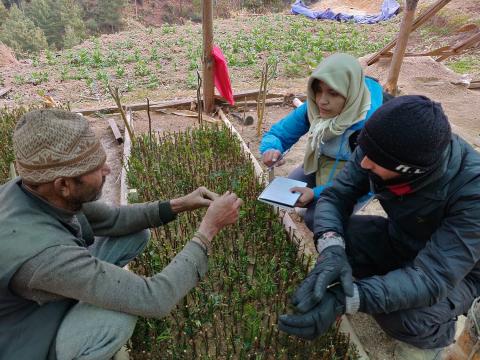
The Himalayan mountains are known as a treasure trove of medicinal plants, many of which have not even been scientifically studied. But one rare tree with proven anti-cancer property is on the verge of extinction, and needs urgent protection.
Maire’s yew (Taxus mairei or Lauth Salla in Nepali) is a conifer that used to be abundant in the mountains of central Nepal. Because of unsustainable harvesting, there are only 500 mature trees left in the wild, and another 1,500 saplings that are being carefully nurtured.
Yews have healing properties for several ailments, but it is for its anti-cancer property that it is most valued, and that is also why the trees are being over-exploited. Their leaves, bark and trunks contain a compound called taxon, proven to inhibit the growth of new cancer cells.
Maire’s yew is one of the three Taxus species found in the country. While Taxus contorta is distributed from west to central Nepal and Taxus wallichiana (Himalayan yew) is found in central to east Nepal. But it is the rarest Taxus mairei is found only in Kavre, Makwanpur and Sindhuli districts in the mountains near Kathmandu Valley.
Taxus mairei is classified as ‘Vulnerable’ in the IUCN and in the red list of critically endangered species in Nepal.
However, although traders and their suppliers harvest them at night to smuggle them out, most local people till recently used to be unaware of its value.

